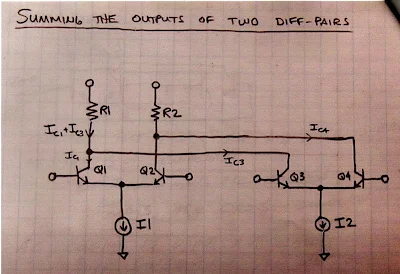Serving the worldwide community of radio-electronic homebrewers. Providing blog support to the SolderSmoke podcast: http://soldersmoke.com
Podcasting since 2005! Listen to Latest SolderSmoke
Tuesday, December 7, 2021
Junk Box Sideband from the Azores (2004 QST Article)
Monday, December 6, 2021
Early Radio in New Zealand, and "The Knack"
"The gnawing discontent..." That is what Jean Shepherd had when he couldn't get his Heising Modulator to work properly. We've all been there.
The last line in the quote from DeSoto's book speaks to one of the major themes of this blog and of the SolderSmoke podcast: the way in which people all around the world got interested in radio in much the same way. So many of us, all around the world, often at age 13 or 14, suddenly got interested in radio. We all had (and have!) "The Knack." This is really very nice -- it is something that we have in common, something that pulls us together.
Sunday, December 5, 2021
Jack NG2E's Winter SOTA Marathon in the Shenandoah
Our friend Jack NG2E is a homebrewer. He is also a Summits-On-The-Air guy. He does much of his SOTA operations along Skyline Drive in the Shenandoah National Park. Jack's Story Map method of documenting this SOTA trip is very cool.
Elisa and I are frequent visitors to this amazing park. Both my kids went to college in the Shenandoah valley, and the park starts just one hour by car west of us. It is a beautiful place. The Appalachian Trail runs through the park; we have crossed paths with "through hikers" who are walking from Maine to Georgia. We have also met up with more than one Black Bear in the park (see below). My son Billy and I launched our Green Hornet rocket from a farm in the Shenandoah valley: https://soldersmoke.blogspot.com/2017/05/still-photos-and-slow-motion-video-from.html
I really like Jack's use of both HF and 2 meter FM. This makes me think that I should blow the dust off my Baofeng HT and bring it out to the Shenandoah next time we visit. Jack's 20 meter CW contact with Christian F4WBN in the Pyrenees added a nice element of transatlantic mountain symmetry.
Check out Jack's Shenandoah Story Map:
https://storymaps.arcgis.com/stories/c9ff4a13eca24b37bc9dcda0d2dce989
Here's another story map from a SOTA trip into the Adirondacks with info on his gear:
https://storymaps.arcgis.com/stories/594ca069a27147c1a8d8b79dc1513a72
I know that Jack wants to include a homebrew rig in his SOTA operations. That would significantly add to the already very high level of operational coolness. Perhaps Colin M1BUU or Paul VK3HN could provide some suggestions or encouragement in this area.
Thanks Jack. Happy trails. Regards to the bears!
Saturday, December 4, 2021
Dean's Supercharged, 16-Watt, Furlough 2040, Simple SSB Rig
A Great Morning on the Old Military Radio Net: AB9MQ's Central Electronics 20A, W3EMD's Dynamotor, WU2D
I usually try to listen in on the Old Military Radio Net on Saturday mornings (3885 kc). Lately I listen with my Mate for the Mighty Midget receiver.
This morning's session was especially good. For me the highlight was when Masa AB9MQ called in from Normal, Illinois using his Central Electronics 20A (see below). That was one of the earliest SSB rigs. A phasing rig, it also ran AM (which was what Masa was using this morning). He had it paired up with a Central Electronics 458 VFO. You folks really need to check out Masa's QRZ.com page:
Buzz W3EMD called in from Rhinebeck, NY. I could hear his dynamotor in the background. Buzz said hello to Masa in Japanese. FB.
Always great to hear Mike WU2D.
Friday, December 3, 2021
Alan Wolke W2AEW: YouTube Silver Play Button Award, and ARRL Hudson Division 2020 Technical Achievement Award
Thursday, December 2, 2021
Peter Parker VK3YE Inducted Into QRP Hall of Fame
Thanks to VK3HN for alerting me to this.
Wednesday, December 1, 2021
KI4IO in India and Nepal, and Discrete Homebrew Gilbert Cells
While in India I was licensed at VU2LHO and worked a lot of US hams with a 135' flat-top and open-wire feed. I had the antenna strung between two bamboo towers atop the embassy housing 2nd-story roof-top. I also put up a 3/8 wave vertical on the roof for 10 meters. That little antenna had 110 radials stapled into the roof screen and worked very well! The rig was a HW-101. I was in Kathmandu, Nepal from early 1980 to late 1982. I could not obtain a license there, but became good friends with Father Moran, 9N1MM, and would often spend time up at his place putting his Drake station on CW. Pretty cool being real DX! Back in the states in late 1982.
Tuesday, November 30, 2021
Putting a Barebones Superhet on 17 Meters with an NE602 Converter (Video)
Sunday, November 28, 2021
How To Understand the NE-602 and the Gilbert Cell Mixer
Saturday, November 27, 2021
The Galway Radio Experimenters Club
Wednesday, November 24, 2021
Gloria -- A Netflix Series about a Shortwave Broadcast Station in Portugal
Rarely if ever will we come across a high quality NETFLIX series built around a shortwave broadcast transmitter. But that is what we have in Gloria. It is really good. We were especially interested in it because we lived in Portugal for three years. In addition to all the intrigue and drama you will catch glimpses of broadcast antennas, big transmitting tubes, and one out-of-focus shot of what appears to be a Hallicrafters receiver (SX-42?)
More info here:
Here's the NETFLIX link:
https://www.netflix.com/title/81073977
Thanks to Thomas K4SWL of SWLing Post for the heads up.



























